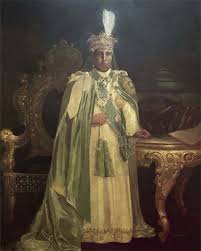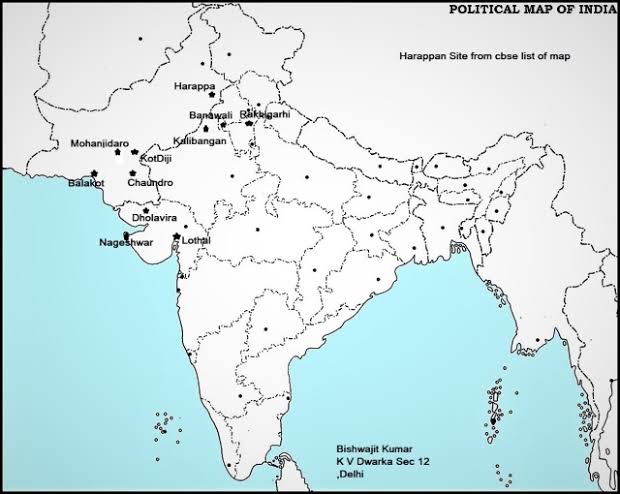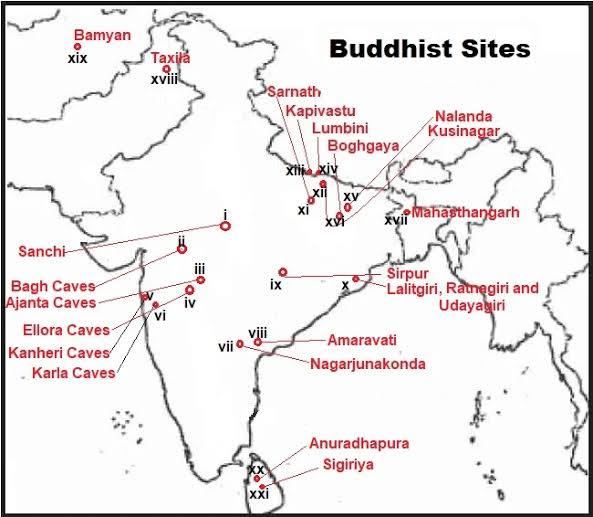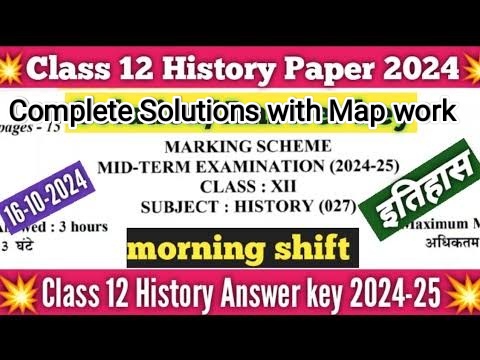SECTION-A (Objective Type Question)
Q1. In which of the following stone inscriptions is there a record of the history of a guild of silk weavers of the fifth century CE?
(A) Sarnath inscription
(B) Mandasor inscription
(C) Girnar inscription
(D) Sonepat inscription
Answer: (B) Mandasor inscription
👉 Mentions silk weavers’ guild in 5th CE.
Q2. Which of the following is called the father of Indian archaeology?
(A) Alexander Cunningham
(B) R.E.M. Wheeler
(C) John Marshall
(D) Ernest Mackay
Answer: (A) Alexander Cunningham
Q3. What of the following, did Bernier call the Indian Mughal cities?
(A) Army towns
(B) Trade towns
(C) Cultural towns
(D) Camp towns
Answer: (D) Camp towns
👉 He saw them as camps, dependent on imperial court.
Q4. Identify the picture and choose the correct answer from the given options –

(A) Queen Padmavati
(B) Sultan Jahan Begum (
) Shahjahan Begum
(D) Prabhavati Gupta
Answer: (B) Sultan Jahan Begum
👉 Noted ruler of Bhopal, early 20th century.
The following question is only for visually impaired candidates in lieu of question no. 4
What was the new way of thinking called in Buddhism?
(A) Hinayana
(B) Mahayana
(C) Theravada
(D) Ancient sect
Answer: B. New way of thinking in Buddhism = Mahayana)
Q5.Fill in the blanks: _______ rulers were identified through metronymics.
(A) Kushanas
(B) Vakatakas
(C) Shakas
(D) Satvahanas
Answer: (D) Satvahanas
👉 Rulers identified by mother’s name.
Q6.Consider the following statements regarding Prayaga Prashasti and choose the correct option:
(i) It is also called the Ginara pillar inscription.
(ii) It is composed by Harishena.
(iii) It is composed in Prakrit language.
(iv) This prashasti is written in the praise of Samudragupta.
Options: (A) Only (i) & (ii) are correct.
(B) Only (ii) and (iv) are correct.
(C) Only (i), (ii) and (iii) are correct.
(D) Only (i), (ii) and (iv) are correct.
Answer: (D) Only (i), (ii) and (iv) are correct
👉 Composed by Harishena, in praise of Samudragupta, NOT in Prakrit (in Sanskrit).
Q7.These are two statements marked as Assertion (A) and Reason (R). Mark your answer as per the code given below:
Assertion (A): Travelogue written by Ibn Battuta, in Arabic language is called ‘Kitab ul-Hind’.
Reason (R): The Moroccan traveller was born in an educated and respectable family in Tangier.
Options: (A) Both (A) and (R) are true and (R) is correct explanation of (A).
(B) Both (A) and (R) are true but (R) is not a correct explanation of (A).
(C) (A) is true and (R) is false.
(D) (A) is false and (R) is true.
Answer: (D) (A) is false and (R) is true
👉 Ibn Battuta wrote Rihla, not Kitab-ul-Hind. Reason is true (educated Moroccan family).
Q8.the Harappan centre and choose the correct option that follows: (1)
- Traces of canals have been found at this Harappan site.
- It is the best source of lapis lazuli, a blue stone that was apparently very highly valued.
(A) Shortughai
(B) Dholavira
(C) Chanhudaro
(D) Nageshwar
Answer: Harappan site for lapis lazuli & canals → (A) Shortughai
Q9.Who is the author of Sanskrit Grammar Ashtadhyayi. (1)
(A) Bharata Muni
(B) Panini
(C) Charaka
(D) Sushruta
Answer: Author of Ashtadhyayi → (B) Panini
Q10.Which one of the following statements is not correct, with reference to ‘great’ and ‘little’ traditions. (1)
(A) These words were coined by 20th century sociologist Robert Radcliffe.
(B) The rituals followed by the priests and the king were called ‘great traditions’.
(C) Those rituals followed by traders were called ‘little traditions’.
(D) The most striking example of mutual interaction between these two traditions is found in ‘Jagannath Temple, Puri, Odisha.
Answer: Incorrect statement → (C) Those rituals followed by traders were called ‘little traditions’
👉 Wrong: Little traditions = popular practices of common people, not only traders.
Q11. Read the given statements carefully and identify the ruler from the given options:
- They were the powerful ruler of Odisha in the 15th century.
- They were also called the lord of elephants.
(A) Gajapati rulers
(B) Ashwapati rulers
(C) Narapati rulers
(D) Raya rulers
Answer: Powerful rulers of Odisha, “Lord of elephants” → (A) Gajapati rulers
Q12. Which of the following stones were weights of Harappan period made of?
(A) Chert
(B) Frience
(C) Steatite
(D) Granite
Answer: Harappan weights made of → (A) Chert
Q13. By matching Column-I to Column-II, choose the correct option given below –
Column-I Column-II
i. Lumbini a. Where Buddha attained nibbana.
ii. Kusinagara b. Where Buddha was born
iii. Sarnath c. Where Buddha gave his first sermon
iv. Bodh Gaya d. Where Buddha attained enlightenment.
Options: (A) i-a, ii-b, iii-c, iv-d
(B) i-a, ii-c, iii-d, iv-b
(C) i-b, ii-a, iii-c, iv-d
(D) i-c, ii-a, iii-b, iv-d
Correct matching → (C) i-b, ii-a, iii-c, iv-d
Q14. Which of the following philosophers used Bernier’s accounts to develop the idea of oriental despotism? (1)
(A) Montesquieu
(B) Karl Marx
(C) Rousseau
(D) Tavernier
Answer: Philosopher using Bernier’s account → (A) Montesquieu
Q15. In which region were the Dakkhini poems written in the form of ‘Shadinama’ and ‘Lorvirama’ composed? (1)
(A) Tamil Nadu
(B) Andhra Pradesh
(C) Karnataka
(D) Kerala
Answer: Dakkhini poems written in → (C) Karnataka
Q16. Sanskrit texts and inscriptions used the term ‘Vanik’ to designate which of the following? (1)
(A) Farmers
(B) Merchants
(C) Soldiers
(D) Ministers
Answer: Sanskrit term Vanik → (B) Merchants
Q17. Atiya mosque, built with brick (1609), is at which of the following places. (1)
(A) Pakistan
(B) Bangladesh
(C) Saudi Arabia
(D) Mecca
Answer: Atiya mosque (1609) → (B) Bangladesh
Q18. Choose the correct from the following and fill in the blanks: (1)
In the Harappan civilization, terracotta models of plough have been found at sites in Cholistan and at _______.
(A) Shortughai
(B) Kot – Diji
(C) Banawali
(D) Rakhigarhi
Answer: Terracotta plough models found at → (C) Banawali
Q19. Identify the traveler on the basis of the given information and choose the correct options: (1)
- The travelogue written by him in 1440s is an interesting mixture of emotions and perceptions.
- In his visit to India, he arrived at Mangalore, and crossed the Western Ghat.
(A) Abul Fazal - (B) Ibn Battuta
- (C) Abdur Razzaq
- (D) Bernier (1)
Answer: Traveller = Abdur Razzaq → (C) Abdur Razzaq
Q20. What does ‘Zimmi’ mean in context of Islam?(1)
(A) Protected group
(B) Pulpit
(C) Chain
(D) Followers
Zimmi → (A) Protected group
👉 Non-Muslims under Islamic rule with protection.
Q21. “May your bird be the haja-bird, may its call be heard in the royal palace”. In the above statement, which bird according to archaeologists, has been called ‘haza-bird’? (1)
(A) Hawk
(B) Pigeon
(C) Crane
(D) Peacock
Answer: D Peacock
SECTION-B (Short-Answer type question) (3×6=18)
Q22. While describing the main features of the script, explain why has it been called an ‘enigmatic script’? (3)
Answer: Harappan Script – Enigmatic
० Undeciphered till today.
० Short inscriptions ( few signs written together).
० No bilingual text like Rosetta Stone available.
OR
“One of the most unique features of the Harappan cities were the excellent and well-planned drains. Substantiate the statement.”
Answer: Drainage System
० Covered drains with inspection holes.
० Connected from houses to main street drains.
० Example of advanced civic planning.
Q23. What were the reasons behind Magadh becoming the most powerful Mahajanpada in 6th to 4th BCE? (3)
Answer: Reasons for Magadha’s rise
० Fertile Ganga plain → rich agriculture.
० Abundant iron ore in Chotanagpur plateau.
० Strong rulers (Bimbisara, Ajatashatru) and efficient army.
Q24. When and under whose supervision was the large and comprehensive project ‘Critical edition of Mahabharata’ started? After its completion, which two findings were drawn out? (3)
Answer: Critical Edition of Mahabharata
० Started in 1919 at Bhandarkar Oriental Research Institute under V.S. Sukthankar.
० Compared 1,259 manuscripts.
० Findings: (i) Mahabharata grew from simple epic to complex composition. (ii) Interpolation and regional variations present.
`Q25. Write the name of the book written by Al-Biruni. What obstructions were mentioned by Al Biruni that were hindering the understanding of the Indian subcontinent? (1+2=3)
Answer: Al-Biruni’s book
Wrote Kitab-ul-Hind.
Obstacles: (i) Language barrier (Sanskrit–Arabic).
(ii) Caste restrictions (no free interaction).
(iii) Religious orthodoxy.
Q26. Which movement emerged in the 12th century under the leadership of Basavanna? Discuss various principles of this movement. (1+2=3)
Answer: Basavanna’s Movement (Lingayat/Veerashaiva)
० Movement: 12th century Karnataka.
Principles: (i) Worship of Shiva only.
(ii) Rejection of caste system.
(iii) Equality of men and women, against rituals.
Q27. Explain the ritual significance of ‘Mahanavami Dibba’ a huge structure established in the Vijayanagara Empire. (3)
Answer: Ritual Significance of Mahanavami Dibba
० Used for king’s military display and royal processions.
० Celebrations of Dussehra (Mahanavami).
० Symbol of royal authority and grandeur.
OR
Describe the structural and cultural features of the Virupaksha Temple, an important and central religious site of the Vijayanagara Empire.
Answer: Virupaksha Temple
० Oldest temple of Vijayanagara.
० Dedicated to Shiva.
० Tall gopuram, pillared halls, marriage hall.
SECTION-C(Long-Answer Type Questions) (3×8=24)
Q28. What is the study of coins called? How have coins been useful in understanding the history from 6th century BCE to the 6th century CE and why did gold coins stop being found from the 6th century CE? (1+4+3)
Answer:
(i)The study of coins is called Numismatics.
(ii) Commercial links – Roman gold coins found in India prove Indo-Roman trade during the Satavahanas and Guptas.
(iii) Resons of gold coins stop:
A) Decline of Roman trade – With weakening of Roman Empire, inflow of gold into India reduced.
B) Decline of urban centres – Economic contraction and fall of long-distance trade reduced minting.
C) Political instability – Post-Gupta period saw regional kingdoms with less resources; silver and copper became common instead of gold.
OR
Political history – Coins carried names, titles, portraits, dynastic symbols (e.g., Indo-Greek, Kushana, Gupta rulers).
Economic history – Indicate trade, taxation, urbanisation, use of different metals (copper, silver, gold).
Religious & cultural history – Coins often bore religious symbols (Shiva, Vishnu, Buddha, Goddess Lakshmi) showing patronage of different sects.
“Although ‘inscriptions’ are an excellent means and source for knowing any history, they have their own limitations which compel historians to look for other sources.” Discuss the usefulness and limitations of inscriptions in the context of this statement. (4+4=8)
Answer: Usefulness of inscriptions :
- Provide direct information about rulers (titles, conquests, donations, achievements).
- Religious & cultural history – Inscriptions in temples, stupas, caves show patronage.
- Administrative records – Taxation, land grants, social categories.
- Multi-lingual inscriptions show spread of languages and scripts (Brahmi, Kharoshthi, Sanskrit, Prakrit).
Limitations of inscriptions :
1.Context missing – Do not give full socio-economic background, need to be supplemented with coins, literature, archaeology.
2. Selective – Focus on rulers/elites; neglect common people.
3. Exaggerated – Kings glorified themselves, hid failures.
4. Damaged / missing portions – Many are incomplete or eroded.
Q29. “In order to understand the sculpture of Sanchi Stupa, it is very important to know the Buddhist literature and folk traditions.” Support the statement with appropriate examples.
Answer:
1.Jataka tales & Buddhist texts – Sculptures on railings/gateways depict stories from Jataka (previous lives of Buddha). Example: Monkey King Jataka.
2. Symbolic representation of Buddha – Early art showed Buddha symbolically (footprints, empty throne, Bodhi tree, wheel of dharma). Understanding this requires Buddhist philosophy.
3. Folk traditions – Scenes of fertility, yakshas-yakshinis, elephants, lotus motifs reflect local beliefs integrated into Buddhism.
4.Narrative style – Sculptures are didactic (teaching moral lessons), which matches oral traditions of Buddhist monks.
5. Sanchi’s gateways (toranas) – Full of carvings like elephants, stupas, Bodhi tree that cannot be understood without Buddhist and folk references.
6. Educational function – Pilgrims understood teachings through these visuals, instead of reading scriptures.
7. Syncretic culture – Both popular folk traditions and high Buddhist thought were blended.
8. Conclusion – Without Buddhist literature + folk tradition, Sanchi sculptures lose their true meaning.
OR
Mention with examples the development of architecture and sculpture associated with the rise of Vaishnavism and Shaivism.
Answer:
- Temples dedicated to Vishnu and Shiva – e.g., Dashavatara temple at Deogarh (Vaishnavism).
- Shaiva temples – Elephanta caves, Kailashnath temple (ellora) with Nataraja images.
- Iconography – Vishnu shown as reclining on Sheshanaga; Shiva depicted as lingam, Maheshmurti.
- Bhakti element – Sculptures emphasize devotion, not just symbolism.
- Puranic influence – Stories from Puranas carved on temple walls.
- Architectural innovations – Rock-cut caves to structural temples, elaborate mandapas, shikharas.
- Regional styles – Nagara (north) and Dravida (south) developed.
- Conclusion – Vaishnavism & Shaivism greatly enriched Indian temple art and sculpture.
Q30. “In the context of Vijayanagara, the astonishing aspects were its water resources and multi-dimensional fortifications.” Discuss the statement. (8)
Answer:
(i) Water Resources:
- Rain-deficient region (Tungabhadra basin) → advanced water management was essential.
- Reservoirs, tanks (Kamalapuram tank), wells, aqueducts constructed.
- Channels drew water from Tungabhadra river.
- Agricultural prosperity (paddy, betel, fruits, flowers) depended on these water systems.
(ii) Fortifications:
- Multiple fortification walls encircled city → seven concentric rings.
- Natural boulders joined with masonry → efficient defence.
- Forts enclosed agricultural lands → ensured supply during sieges.
- Gates controlled entry points, provided security and checkpoints.
- City planning combined military, religious, and economic functions.
- Accounts of travellers (Abdur Razzaq, Domingo Paes) praised massive fortifications.
- Fortifications reflected power, wealth, and strategic vision.
- Conclusion – Water and forts symbolised Vijayanagara’s brilliance in adapting geography and ensuring survival.
OR
“After the initial surveys conducted by Mackenzie, it became possible to mark places, temples and markets on travelogues”. Justify the statement. (8)
Answer:
- Colonel Colin Mackenzie (1817) → first surveyor general of India.
- Collected manuscripts, inscriptions, drawings of temples/monuments.
- Marked out Hampi’s ruins → temples, mandapas, bazaars, royal structures.
- Identified sacred & royal centres separately.
- Travelogues after him could show clear layout of city (Virupaksha temple, Vittalaswami temple, Hazara Rama temple).
- His maps became basis for archaeological exploration.
- Helped distinguish between sacred traditions and political centres.
- Conclusion – Mackenzie’s surveys were key to reconstruct Vijayanagara’s urban layout.
SECTION-D
(Source Based Questions) (4×3=12)
Q31. Read the source, given below and answer the question that follow:
Eight forms of marriage
Here are the first, fourth, fifth and sixth forms of marriage from the Manusmriti:
First: The gift of a daughter, after dressing her in costly clothes and honouring her with presents of jewels, to a man learned in the Veda whom the father himself invites.
Fourth: The gift of a daughter by the father after he has addressed the couple with the text, “May both of you perform your duties together”, and has shown honour to the bridegroom.
Fifth: When the bridegroom receives a maiden, after having given as much wealth as he can afford to the kinsmen and to the bride herself, according to his own will. Sixth: The voluntary union of a maiden and her lover… which springs from desire …
31.1 When was ‘Manusmriti’ compiled? (1)
Answer: Compiled c. 2nd century BCE – 3rd century CE.
31.2 According to religious scriptures, how many marriages are acceptable and how many types of marriages are considered best? (½+½=1)
Answer: 8 forms of marriage; first four considered approved.
31.3 What does exogamy mean? (2)
Answer: Exogamy = marriage outside one’s caste/kinship group.
Q32. Read the source, given below and answer the question that follow:
The pilgrimage of the Mughal princess Jahanara, 1643
The Following is an excerpt from Jahanara’s biography of Shaikh Muinuddin Chishti, titled Munis al Arwah (The Confidant of Spirits):
After praising the one God… this lowly faqira (humble soul) Jahanara… went from the capital Agra in the company of my great father (Emperor Shah Jahan) towards the pure region of uncomparable Ajmer… I was committed to this idea, that every day in every station I would perform two cycles of optional prayer…
For several days… I did not sleep on a leopard skin at night, I did not extend my feet in the direction of the blessed sanctuary of the revered saving master, and I did not turn my back towards him. I passed the days beneath the trees.
On Thursday, the fourth of the blessed month of Ramzan, I attained the happiness of pilgrimage to the illuminated and the perfumed tomb… With an hour of daylight remaining. I went to the holy sanctuary and rubbed my pale face with the dust of that threshold. From the doorway to the blessed tomb I went barefoot, kissing the ground. Having entered the dome, I went around the light-filled tomb of my master seven times – Finally, with my own hand I put the finest quality of itar on the perfumed tomb of the revered one, and having taken off the rose scarf that I had on my head, I placed it on the top of the blessed tomb…
32.1 Where is the Dargah of Shaikh Muinuddin Chishti? (1)
Answer: Dargah → Ajmer (Rajasthan).
32.2 When did Jahanara reach the Dargah? (1)
Answer:She reached on 4th Ramzan, 1643.
32.3 What rules did Jahanara follow before reaching to the Dargah. (2)
Answer:Exogamy = marriage outside one’s caste/kinship group.
Q33. Read the source, given below and answer the question that follow:
The poor peasant
An excerpt from Bernier’s description of the peasantry in the countryside:
Of the vast tracts of country constituting the empire of Hindustan, many are little more than sand, or barren mountains, badly cultivated, and thinly populated. Even a considerable portion of the good land remains untilled for want of labourers, many of whom perish in consequence of the bad treatment they experience from Government. The poor people, when they become incapable of discharging the demands of their rapacious lords, are not only often deprived of the means of subsistence, but are also made to lose their children, who are carried away as slaves. Thus, it happens that the peasantry, driven to despair by so excessive a tyranny, abandon the country. In this instance, Bernier was participating in contemporary debates in Europe concerning the nature of state and society and intended that his description of Mughal India would serve as a warning to those who did not recognise the “merits of private property.”
33.1 Write the name of the book written by Bernier? (1)
Answer: Book → Travels in the Mughal Empire.
33.2 According to Burnier, what caused the decline in the rise of better landholders in India.
Answer: Cause: Oppressive revenue demands & tyranny of landlords.
(1) 33.3 What warning does the description of India during the Mughal period give to the people of Europe. (2)
Answer: Warning → If Europe ignored private property, same decline and oppression would occur.
SECTION-E
(Map Based Question) (5)
Q34. 34.1 On the given political map of India, locate and label the following places with appropriate symbols.

A. Nageshwara (1)
B. Kot-Diji (1)
C. Dholavira or Kalibangan (1)
34.2 On the same outline map, two important Buddhist sites have been marked as A and B. Identify them and write their correct names on the line drawn near them. (2)
Answer: 34.2 Buddhist Sites (A & B)

A: Sanchi (Madhya Pradesh).
B: Amaravati (Andhra Pradesh).
NOTE: The following questions are only for Visually Impaired Candidates in lieu question No. 34.
34.1 Which craft work was done in Nageshwar during Harappan civilisation?
34.2 Whose evidences have been found from Dholavira?
34.3 Where have the evidences of ploughed fields been found in Harappan Civilisation?
34.4 Who was the first female Bhikkuni to enter the Sangha?
34.5 The teachings of Buddha have been reconstructed on whatbasisA? (1)
Answer:
34.1 Craft at Nageshwar → Shell-bangle making.
34.2 Evidences at Dholavira → Water reservoirs, town planning.
34.3 Ploughed fields → Kalibangan.
34.4 First female Bhikkuni → Mahapajapati Gotami.
34.5 Teachings of Buddha reconstructed from → Tripitaka + inscriptions + Jataka tales.







